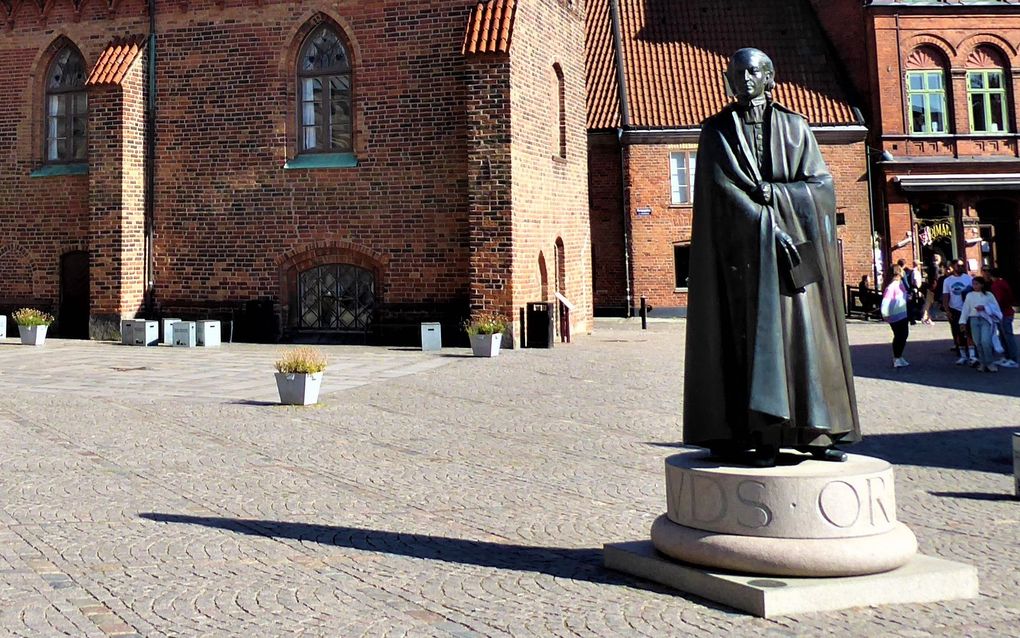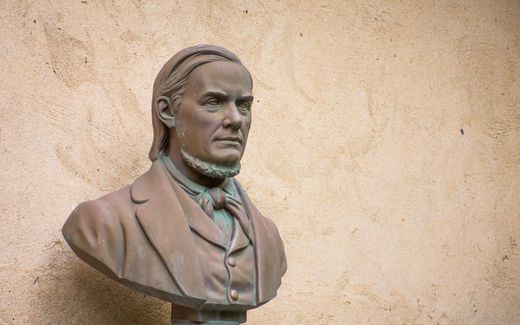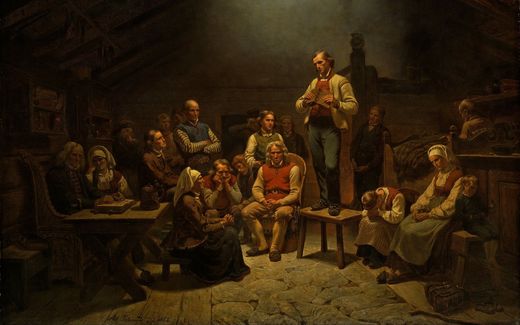Modern Sweden begins with this revival preacher

The statue of Henric Schartau in Lund. Photo Wikimedia Commons
Northern Europe
A bronze statue of a man wearing a cape, a clerical collar and holding a book: This is what you find if you visit Lund, in the county of Skåne in Sweden. The statue is located in the square next to the imposing Lunds domskyrka (Lund Cathedral).
The man honoured by this statue is a Swedish Lutheran clergyman. His name is Henric Schartau (1757-1825). On February 3, 2025, his death was 200 years ago.
Schartau was one of the men who was at the heart of the making of modern Sweden. However, very few Swedes would be able to explain who he was. Time to change that.
In short, Henric Schartau was a Lutheran pastor through whom one of the most powerful spiritual revivals in southwest Sweden began. The cape he wears on the statue is also a reminder that he worked at the University of Lund.
Henric Schartau was born into a Christian family in Malmö on September 27, 1757. His grandfather had been the city’s mayor, while his father was a city clerk. Schartau demonstrated superior intellectual abilities from an early age. He attended the Latin school in Malmö before entering Lund University to study philosophy at the very young age of fourteen.
Unfortunately, Schartau also encountered hardship. He lost his mother at the age of thirteen, and his time in Lund was a period of moral decline. However, the Christian education he received from his parents, and especially from his grandfather, did not allow him to drift away for long.
Revival
At the age of 20, Henrik Schartau experienced a great turning point in his life: his conversion to Christ. After receiving his master’s degree, he was ordained a pastor in Kalmar, on the Baltic Sea coast, in 1778.
Four years later, he returned to Lund where he was appointed assistant vicar at the cathedral. It was at this time that he began preaching to students at the university. Later, Schartau also became a pastor in the small villages of Bjällerup and Stora Råby, not far from Lund.
Despite having lived most of his life in the county of Scania, it was particularly in the Gothenburg region that Schartau would see a real revival movement following his sermons. However, this revival was somewhat different from those in many other parts of the Nordic countries at the time.
First of all, it remained part of the traditional Lutheran church. The preachers were ordained pastors, not lay people. Furthermore, Henrik Schartau’s sermons strongly emphasised the still active role of God’s law in contemporary society.
Legalism
This gave rise to certain accusations of legalism, to which he responded:
“Yes, I have preached law, and I will preach it as long as God gives me strength to move my tongue. The Chief Shepherd Himself preached the law, and so did His apostles. So I, too, have preached the law, though I well know that no man shall be justified by the works of the law.
I have not attempted to retain contrite hearts under the threats of the law. I have preached the law as a tutor unto Christ. It has been my sincere desire, so far as possible, to tear down the kingdom of Satan from the very bottom. I have been desirous of threatening the obdurate sinner that his conscience might be awakened.”
The awakening did not please everyone. The authorities of the Diocese of Gothenburg sought to break up the movement by dispersing the pastors who had begun to follow Schartau to the small villages of the region. But instead of causing the revival to die out, it spread wherever these pastors were sent.
Schartauanism

The Schartau revival (which became known as Schartauanism) particularly covered the region of Västra Götaland, where Gothenburg is located. Schartau’s revival movement even spread to the Swedish diaspora in the United States, especially in the northeastern state of Maine.
From Varberg in the south of Sweden to Uddevalla in the north, the revival instilled moral rigour in the agricultural and working population of the region. The members of the movement developed a daily practice of communal prayer at home. A large part of the population took the habit of attending the local church on Sundays.
In some cases, the pastors visited the workplaces to question the workers to see if their faith was strong. These visits were generally well accepted. The preaching of these pastors anchored in the hearts of the population the idea that work was a vocation, a way of worshipping God.
Wise man
The book of Ecclesiastes speaks of a city that was besieged by a powerful king. But in that same city was a poor but wise man. Thanks to his wisdom, the city was delivered. However, after the deliverance, the memory of this man was forgotten (Ecclesiastes 7). Henric Schartau is somewhat the equivalent of this poor man.
Today, Skåne and Västra Götaland are among the Swedish counties with the highest GDP per capita. But this material prosperity would surely not have been achieved without the preaching of Schartau and his disciples. Their work instilled moral rigour among the population, a necessary condition for the economic development of a region.
Related Articles










